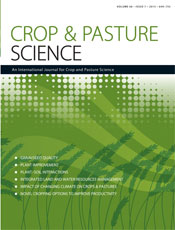CP14158Yield gain due to fungicide application in varieties of winter wheat (Triticum aestivum) resistant and susceptible to leaf rust
Winter wheat germplasm with variable degrees of resistance to leaf rust was subjected to fungicide protection. The yield loss of genotypes susceptible to leaf rust varied from 30% to 60% depending on the environment and severity of infection. Genotypes completely or moderately resistant to leaf rust also responded positively to fungicide protection, with 10–30% yield increases. The magnitude of yield gain by resistant germplasm justifies its capture in breeding programs to develop varieties resistant to diseases and with greater benefits from the fungicide protection.




